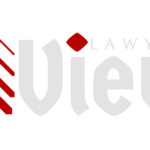Equitable Fraud, like many concept issue from equity, appears to be fluid concept difficult to pin down, but fundamental in the Chancey jurisprudence.
Merriam Webster defines Fraud in Equity as ” fraud for which a court of equity grants a remedy. The general principle of Fraud in Equity in the Legal profession stipulates that Equity will not allow a statute to be used as a cloak for fraud.
Generally speaking, Fraud in Equity is classified under the headings:
a) Inequitable and unconscionable bargains as exemplified in Evans v. Llewellyn ( 1787 ) 1 Cox Eq. ( as. 333 and Fry v. Lane ( 1888 ) 40 Ch. D. 312. 1
A bargain will be regarded as being inequitable and unconscionable if one of the parties to the contract uses his great position, superior intellect or superior knowledge of worldly affairs to induce the other party of poor means, weaker intelligence or great predicament to execute the contract.
Both undue influence and unconscionable bargains attempt to provide equitable remedies to abuse from stronger parties under contract law. The doctrine of undue influence protects people where there is a relationship of trust and confidence, whereas where unconscionable bargains are concerned, no relationship of trust is required, there is instead protection from victimisation.
Thus, there are three elements to an unconscionable bargain:
i. The claimant must show that they were at a disadvantage.
ii. The stronger person must know of this disadvantage.
iii. The stronger person must use this knowledge to victimise the claimant.
b) Abuse of a fiduciary or confidential relationship as between. For example:
i. Parent and child
ii. Solicitor and client
iii. Doctor and patient
iv. Trustee and beneficiary.
However, before a plaintiff can recover damages for an alleged breach of a fiduciary or confidential relationship, a plaintiff must prove the element of a breach of fiduciary duty case. Specifically, the plaintiff must prove that a fiduciary relationship existed between the plaintiff and defendant.
c) Fraud upon the public or third parties: as exemplified in such cases as Chesterfield v. Jaussen ( 1750 ) 2 ves Sen 125 and Reading v. The King ( 1951 ) AC 507. The above list of constructive frauds is not exhaustive.
A person held liable for actual or constructive fraud can be described as having
a) been fraudulent; or
b) acted fraudulently; or
c) defrauded.
By virtue of a fiduciary or confidential relationship which exists between a Solicitor and his client, a presumption of undue influence shall be imputed into any gift or contract of sale between the parties and the onus shall lie on the Solicitor to rebut this presumption by proving
(i) That the client was fully informed;
(ii) that the client had competent and independent advice; and
(iii) that the price or bargain was a fair one – see Wright v. Carter ( 1903 ) 1 Ch. 27.
” Even if the relationship of Solicitor and client, in the strict sense, has terminated, the presumption of undue influence will still arise if the confidence naturally attached to such relationship has been ceased having regard to the circumstances of each particular case – see Demerara Bauxite Co. Ltd. V. Hubbard ( 1923 ) A.C. 673.”
Written By: Akinola Michael. A






